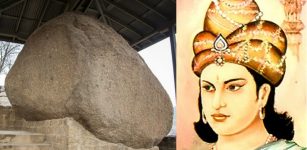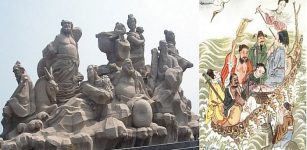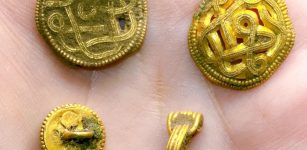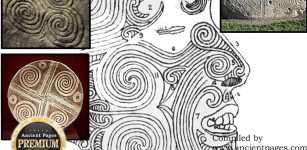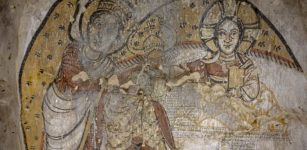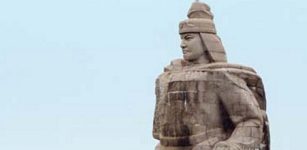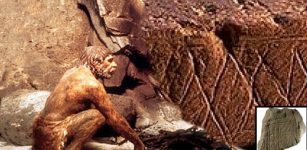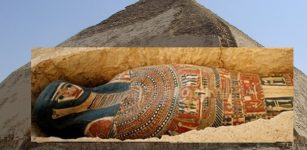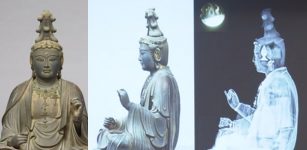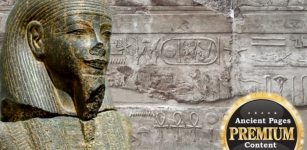Bulgaria’s Reliefs From Ancient Thracian Sun Shrine – Restored
AncientPages.com - Ornate ancient Thracian marble steles from a Thracian shrine dedicated to the sun have been restored with a permanent open-air exhibition of replicas of the steles.
The ancient Thracian shrine is located in the area known as Stolovatets, about 5 km west of the town of Razlog, in Southwest Bulgaria. Its ruins are dated back to the end of the Bronze Age and the beginning of the Iron Age, reports Archaeology in Bulgaria.
Left: The depictions on one of the stone steles found in the Stolovatets Shrine near Bulgaria’s Razlog feature geometric motifs such as triple and double spirals representing the sun light, an image of the sun, as well as images of a two-headed snake-like dragon and a man. Photo: Razlog Municipality. Right: The same image showing the sun and the two-headed snake-like dragon interacting with a man (who sticks his hand in the dragon’s mouth) are seen at the bottom of the image. Photo: Ivo Filipov, Wikipedia
The site is known for the discovery of Ancient Thracian marble slabs or steles and three Thracian burial mounds (tumuli) connected with the cult of the ancestors.
Associated with the Thracian shrine's dedication to the sun, the ancient Thracian relief stone steles were discovered by accident by a local villager back in the 1950s.
The stone slabs date back to the 2nd century BC.
Their reliefs feature intriguing ancient motifs such as triskelions (triskeles), i.e. three interlocked spirals, and double spirals, all of which are ancient sun symbols, as well as the motif of a snake-like dragon interacting with a man. For more details about the interpretation of the images on the Thracian steles from Razlog check out the Background Infonotes below.
Some Bulgarian archaeologists and historians have described the Thracian shrine in Stolovatets near Razlog as one of the few preserved monuments of the most ancient type of Thracian culture.
The Thracian monument as well as the geometric motifs of the reliefs found on the slabs have led the archaeologists to believe that it was dedicated to the cult for the sun.
The geometric motifs on the steles include triskelions (triskeles), i.e. three interlocked spirals, and double spirals, all of which are ancient sun symbols.
The largest stone stele features a sun image in the middle of a two-headed snake-like dragon, with a phallic male figure in front of it sticking his hand in the dragon’s mouth. These are integrated into a large boat-like image.
AncientPages.com
source: Archaeology in Bulgaria



